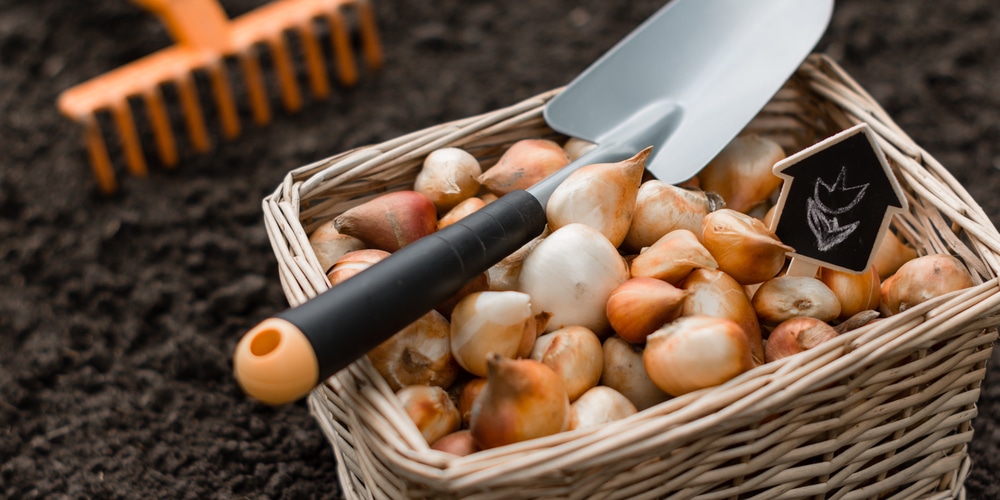Yes, you can soak your bulbs before you plant them. That being said, there are also certain other aspects related to the topic that you should be aware of. Read the article and go through the information given below to find a detailed answer to the question “Should you soak bulbs before planting?”
The Idea Behind Soaking the Bulbs
The main idea behind soaking the bulbs before they are planted is that it will provide the bulbs with moisturization. It can be especially useful and required when the soil does not have enough moisture or there is a long-time gap before you plant the bulb. However, you should know that soaking the bulbs alone may not be the solution to the problem of dry soil. You should ensure that the soil is adequately watered and irrigated so that it has enough hydration to feed the requirements of the plant.
The Bulbs for Soaking
Soaking goes down well with certain bulbs of the tear-drop or the tunicate shape varieties. However, it may not be suitable for certain other varieties of birds including the Lily bulbs which have fleshy and loose scales. If the bulbs of a plant are soaked well enough, they will start to grow immediately. Therefore, soaking may save you up to three weeks of growth time. Soaking is especially beneficial for the bulbs that are being planted in the Northern climates. In such climates, the winter arrives early.
Soaking the Bulbs before Planting
You get some flexibility when it comes to the time of soaking the bulbs before they are planted. You can soak the bulb one day or two days before planting, or even in seven days. A study found that there is no major height difference in these different treatments for soaking.
Number of Bulbs That can be Soaked in a Solution
A 1 liter of solution can be used for soaking approximately 100 bulbs. A plant bulb may utilize somewhere between 4 to 8 ml of the soaking solution. Therefore, a gallon of solution and water can be used for soaking 370 bulbs.
Duration of Soaking
Plants should be soaked for at least 1 hour to a maximum of a few hours more. Even the 20 minute or 40 minutes soaks can provide good results.
Disposing of the Unused Solution
If your bulb-soaking solution contains PGRs and pesticides, you cannot simply put them into the drain. It is an illegal way to get rid of hazardous waste. These pesticides are also expensive and would be wasted. You can save the unused solution and use this for another bulb batch and crop.
The Temperature of the Soak Solution
While preparing the solution to soak your bulbs, you should also be considerate of the temperature. The bulbs should not be soaked in a solution having extremely warm (88 F) and extremely cold (45 F) temperatures. Such extreme temperatures may reduce the efficacy of the important nutrients and substances that you have added to the solution. The temperature range for your solution should be somewhere between 75 to 60 Fahrenheit.
Soaking to Prevent the Rodent Effect
Many of the gardeners complain that the bulbs they grow fail immediately. It happens because the bulbs may be eaten by the rodent soon after they are planted. These smaller bulbs are delicacies for rodents. Soaking may increase the size of your bulb.
If you soak the bulb for approximately 12 to 24 hours in tonic water, it may save it from rodent attack. The quinine found in the tonic is not liked by the rodents. Therefore, soaking may prevent rodent attacks. You should also try to plant the bulbs deep into the soil.
After planting, you can also add some talc powder so that the smell can be disguised. And more talc if the rain pours soon after you plant the bulb. The anemone bulbs must be soaked as the process may soften them, thereby increasing their growth. Some plants and bulbs including the Daffodils repel rodents on their own and therefore do not require the soaking treatment for this purpose.
Should You Soak Bulbs Before Planting: Conclusion
Soaking the plant bulbs does not impact their growth and development adversely. The plants will be growing and blooming normally or even faster if their bulbs are soaked. Soaking can also be an effective way to control the height of the crop and the plant. You can always test some pre-plant bulbs for soaking before you soak the entire crop.

